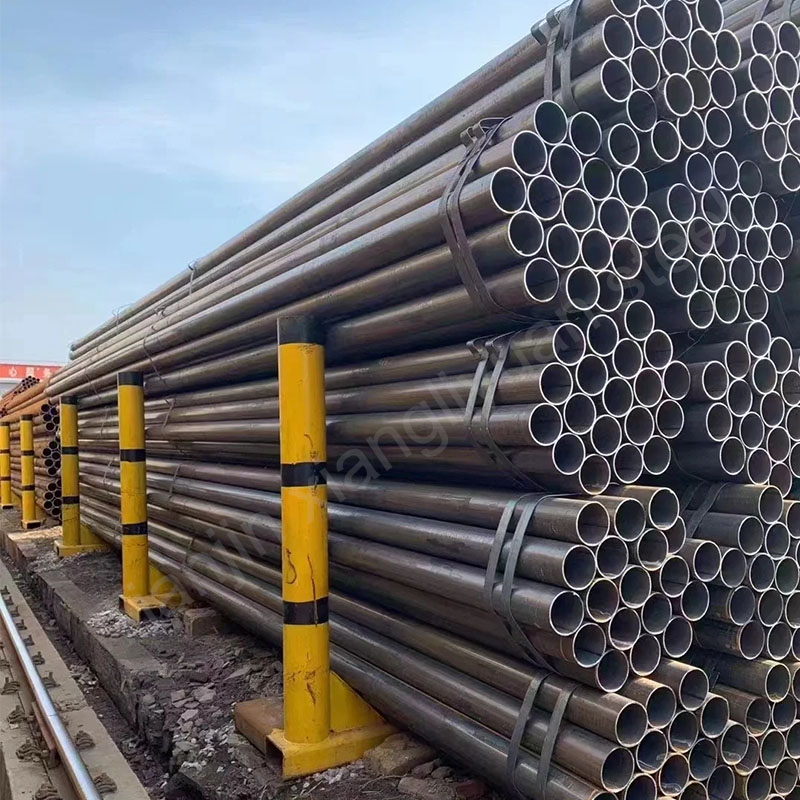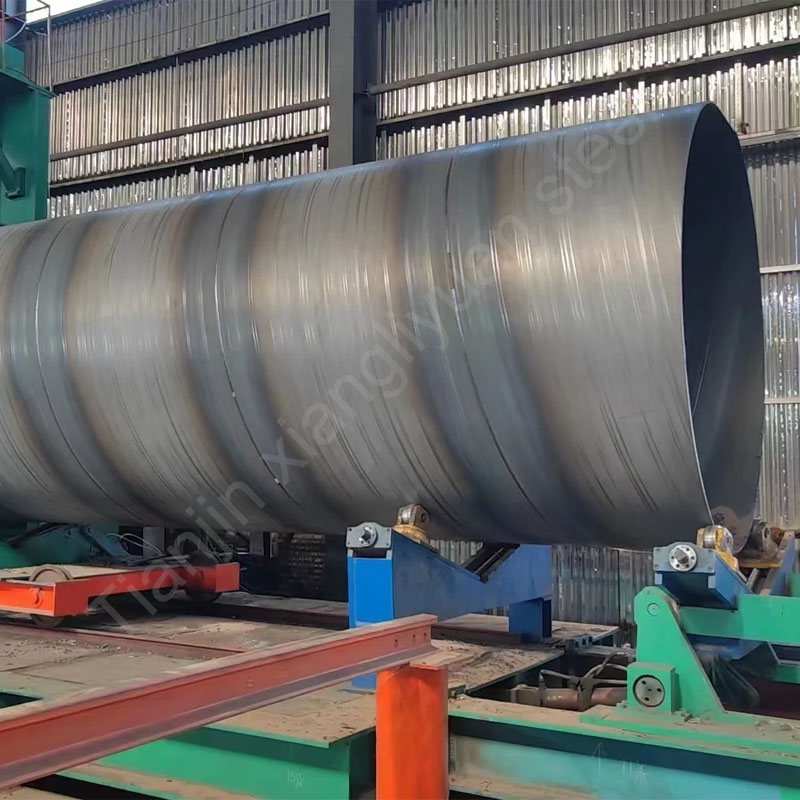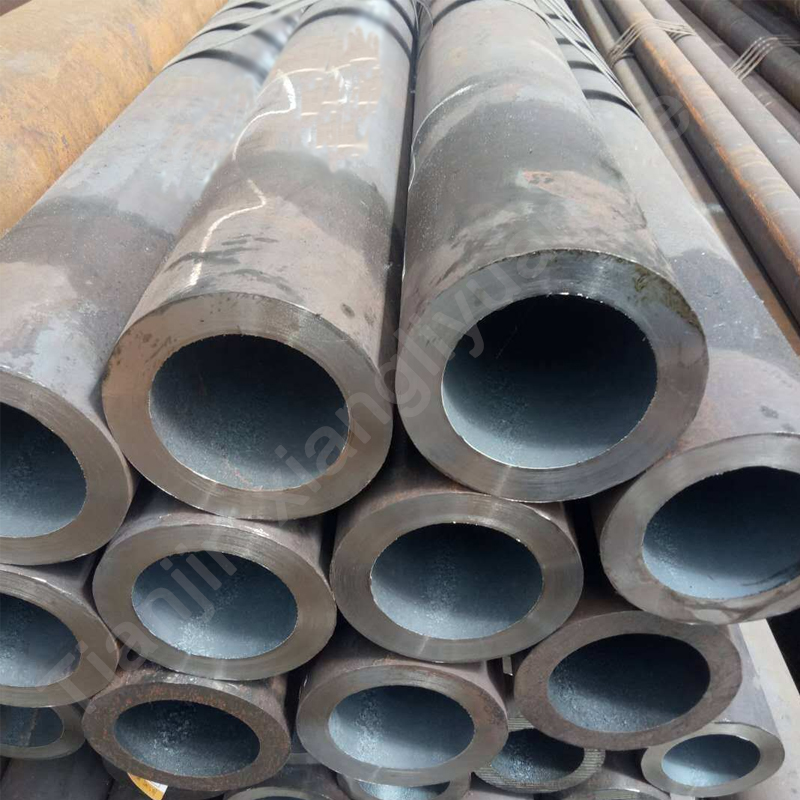In industrial pipeline systems, LSAW and SSAW are two mainstream types of welded steel pipes. Although both belong to the category of arc welded steel pipes, they have significant differences in manufacturing process, structural performance and engineering applications.
1. Essential differences in manufacturing processes
1. Comparison of forming processes
– Straight seam welded steel pipes
Using JCOE (J-ing, C-ing, O-ing, Expanding) cold forming process:
① The steel plate is subjected to multiple progressive bending to form precise “J” and “C” type pre-bends;
② The tube blank is closed by the O-forming machine, and the welds are distributed in a straight line;
③ Multi-wire submerged arc welding (SAW) is used to complete the internal and external welds, with a welding speed of 1.2-2.5m/min;
④ The mechanical expansion process ensures the geometric dimensional accuracy (ovality ≤0.6%).
– Spiral welded steel pipe
Dynamic forming technology is applied:
① The steel strip is continuously spirally curled at a forming angle of 15-25°;
② A stable pitch is achieved through a three-roll plate bending system (usually 0.8-1.2 times the diameter of the steel pipe);
③ Single-wire/double-wire submerged arc welding is performed along the spiral line, and the welding speed is controlled at 0.8-1.5m/min;
④ No expansion process is required, and the pipe diameter is achieved by adjusting the forming angle (Φ219-Φ3000mm).
2. Engineering differences in mechanical properties
1. Strength characteristics analysis
– Axial bearing capacity
Because the longitudinal weld of the straight seam welded pipe is parallel to the main stress direction, its axial tensile strength can reach more than 95% of the parent material; because the weld of the spiral welded pipe is inclined, the axial strength is about 85-90% of the parent material.
– Hoop strength performance
The hoop strength of spiral welded pipes is 12-18% higher than that of straight welded pipes due to the spiral distribution characteristics of the weld (API 5L standard verification data). In the DNV OS-F101 specification, the hoop stress design factor of spiral welded pipes can reach 0.72, which is better than 0.6 of straight welded pipes.
2. Defect sensitivity
– The straight welds of straight welded pipes are easier to achieve 100% ultrasonic flaw detection (UT), and the defect detection rate is ≥99%;
– Due to the spiral direction of the weld, the tracking phased array ultrasonic testing (PAUT) is required for spiral welded pipes, and the detection sensitivity of inclusions and unfused defects is reduced by about 15%.
3. Low temperature toughness
In the -40℃ low temperature impact test:
– The Charpy impact energy of the weld zone of the straight welded pipe is ≥80J (ASTM A370);
– The impact energy dispersion of spiral welded pipes increases due to the large number of thermal cycles (60-120J).
3. Standards and specifications and engineering selection
1. International standard adaptability
Applicable standards for straight seam welded pipes: API SPEC 5L PSL2; Applicable standards for spiral welded pipes: API SPEC 5L PSL1
Applicable standards for straight seam welded pipes: ISO 3183-2; Applicable standards for spiral welded pipes: ISO 3183-3
Applicable standards for straight seam welded pipes: GB/T 9711-2017 L485; Applicable standards for spiral welded pipes: GB/T 9711-2017 L415
2. Typical application scenarios
– Preferred fields for straight seam welded pipes
– High-pressure oil and gas transportation (design pressure ≥10MPa)
– Low-temperature liquefied gas storage tanks (-196℃ LNG working conditions)
– Offshore platform columns (ASTM A252 Gr3)
– Nuclear power main pipelines (RCC-M M3401)
– Applicable scenarios for spiral welded pipes
– Medium and low-pressure water pipelines (≤6.4MPa)
– Pile foundation pipe (EN 10219 S355J2H)
– Structural support frame (ASTM A500 GrC)
– Coal mine ventilation duct (MT/T 181)
The technical difference between straight seam welded steel pipe and spiral welded steel pipe is essentially the difference in material forming method and stress optimization path. Engineering selection needs to comprehensively consider pressure level, medium characteristics, environmental conditions and full-cycle cost. With the development of intelligent welding technology, the two are moving from alternative competition to functional complementarity, opening up a broader application space in the field of new composite pipes. Accurately grasping its technical characteristics is the key to optimizing the engineering design of pipeline systems.






